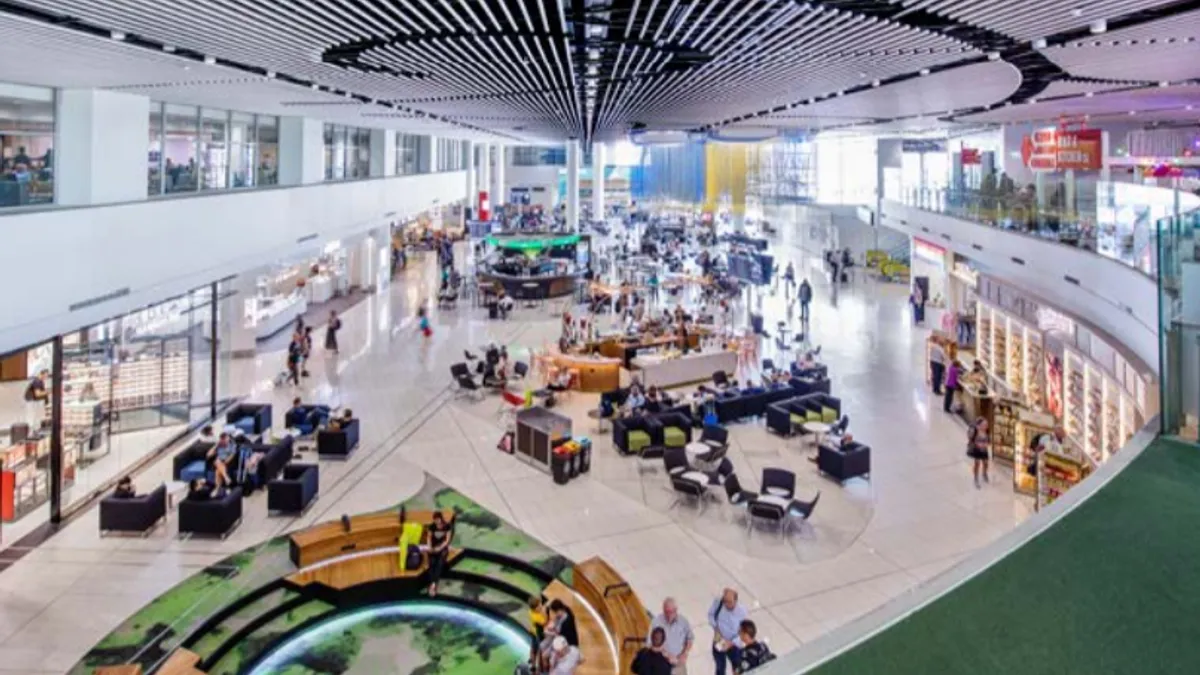Global design architecture firm Gensler published a new report, "Shaping The Future of Cities," to forecast future city design trends.
With more than 70% of the world's population expected to live in cities by 2050, the report anticipates how major urban challenges like climate change, health care and even stressful airport experiences will affect future city designs.
The five areas anticipated to influence the most change in cityscapes include: climate change and micromobility, airports, data centers, patient-driven health care, and museums and libraries.

1. Climate change and micromobility will overhaul cityscapes
"Climate change is on everyone’s mind, and is affecting markets, governments, and people the world over," the report writes. That holds true for the more than 90% of all urban areas that are coastal, putting a majority of cities at risk for flooding and increasingly extreme storms.
As a result, cities will need to adapt and "aggressively" prepare for climate change. Public-private partnerships will dominate to help cities adopt "innovative resilient strategies," in part by zoning low-lying areas like parks and wetlands, and creating elevated transportation networks in advance of floods.
Roadways will also have to adapt to the influx of new mobility vehicles, including autonomous vehicles (AVs), e-bikes and scooters. As more people turn to AVs in the U.S., 500 million parking spaces will open up for redevelopment, making way for reuse opportunities that include outdoor dining or gathering spaces.

2. Airports will become spa-like and attract non-travelers
Airports will evolve from transportation centers to essentially miniature cities, according to the report. The number of people traveling by air is expected to almost double to 7.8 billion people in 2036, according to the International Air Transport Association.
As more people take to the skies, airports will seek ways to make their locations authentic to the surrounding area with locally sourced elements like foods and artwork. Airports will also work to attract local residents with their retail, restaurant and entertainment options. To help lure in non-travelers, airports will in-part focus on wellness experiences to help visitors feel welcome and pampered — think: yoga rooms, outdoor green spaces, gyms and even walking paths.
The 17 million-square-foot Kunming Changshui International Airport in China is an example of such an airport. It includes two hotels, multiple transit connections and a roof that is designed to act like a canopy of leaves, "softly illuminating the concourse, reducing glare, and increasing passenger comfort."
Uber Air skyports also incorporate these trends with co-working areas, retail and restaurant space, and micromobility and ride-hailing zones. Gensler recently unveiled a Los Angeles skyport design that would include fitness centers and even museums to help create a community feel.

3. Critical facilities will move from rural to urban spaces
Critical facilities are currently known for being located in isolated areas, but they will soon be located in more urban centers.
The global data center market will grow by $97 billion between 2017-2022, according to Technavio. As executives increasingly fight cyber crime and oversee management of their computing systems, command centers will be among the critical facilities built.
The "arms race" to build supercomputers will also contribute to the data center market growth. National labs will continue their work to develop ever-faster supercomputers that can be used for everything from quantum mechanics to climate change research. Universities and hospitals will also work hastily to build more supercomputers to support areas like research and sequence DNA for diagnostic purposes.

4. 'The patient will see you now'
The patient-doctor dynamic will flip in future smart cities thanks in part to increasingly tech-savvy patients who have greater choice in where and how they receive treatments, according to the report.
Speaking of tech savvy: Data analytics will provide doctors with a holistic patient view, improving communication and personalized care plans. Tech-focused health insurance startups will also help encourage changes in the industry, according to Forbes. More devices like genetic testers, health screens and even personal fitness solutions will be designed for the home.
Waiting rooms will take on a new purpose in future smart cities, too. Many of the areas will transform from drab fluorescent-lit rooms to "active health and wellness concourses, where the community can access advice, participate in classes or connect with patients in support groups."

5. Museums and libraries will continue to be pillars of inclusivity
Ninety-four percent of people believe that museums are open to all "types of people," according to a Gensler Research Institute report, and 91% view museums as trustworthy sources of information. To help reinforce the perception of inclusivity, the report recommends that museums incorporate "gender-inclusive restrooms, railings, clear interpretive labels and navigational signage, and trigger warnings."
Libraries will also play an increasingly important role in the smart city. That role will include helping the community by promoting community service, learning through play and providing access to technology, according to the report. To help meet these new needs, the report suggests that libraries reconfigure their space to meet the changing ways people seek information.




















